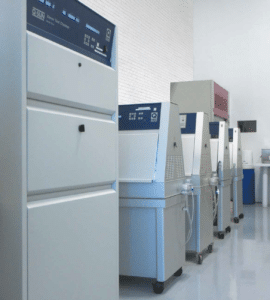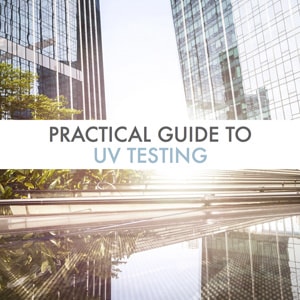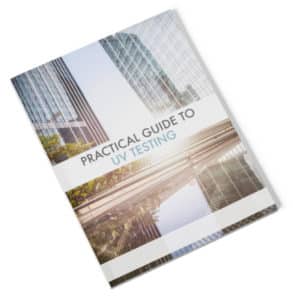SAE J2527
Accelerated Exposure of Automotive Exterior Materials Using a Controlled Irradiance Xenon-Arc Apparatus
 SAE J2527 is a performance based standard for accelerated weathering that uses a Xenon Arc as a light source to simulate outdoor exposure to sunlight on an accelerated basis. Micom Laboratories offers SAE J2527 test services as part of its offering for UV testing and Automotive testing. This standard calls up practice ASTM G155 while specifying specific tests and monitoring conditions. Testing to ASTM G155, using a proper filter combination, allows the reproduction of the weathering effects occurring when materials are exposed to sunlight, heat and moisture on an accelerated basis. The exposure conditions required in SAE J2527 are identical to cycle #7 of ASTM G155.
SAE J2527 is a performance based standard for accelerated weathering that uses a Xenon Arc as a light source to simulate outdoor exposure to sunlight on an accelerated basis. Micom Laboratories offers SAE J2527 test services as part of its offering for UV testing and Automotive testing. This standard calls up practice ASTM G155 while specifying specific tests and monitoring conditions. Testing to ASTM G155, using a proper filter combination, allows the reproduction of the weathering effects occurring when materials are exposed to sunlight, heat and moisture on an accelerated basis. The exposure conditions required in SAE J2527 are identical to cycle #7 of ASTM G155.
SAE J2527 Test Experimental Parameters
Contrary to ASTM G-155 where many parameters need to be specified, SAE J2527 is very specific as to what test conditions need to be used. The parameters are as follow:
- Inner lamp filter: quartz
- Outer lamp filter: Borosilicate
- Lamp irradiance level: 0,55 watts X meter-2 X nm-1
- Chamber air temperature – light cycle: 47 oC
- Chamber air temperature – dark cycle: 38 oC
- Chamber relative humidity – light cycle: 50 %
- Chamber relative humidity – dark cycle: 95 %
- Black panel temperature – light cycle: 70 oC
- Black panel temperature – dark cycle: 38 oC
- The timing of light/dark cycle with sample surface spray:

SAE J2527 Test Quality Control
SAE J2527 requires the use of reference polystyrene chips as a mean to monitor the test performance. The chips are exposed to a set of specific time intervals. The chips color is monitored per ASTM D2244 test, on the b axis and the color change is monitored for each time interval. The measured color change must fall within the acceptable range specified by the reference polystyrene chip supplier.
We take care of testing from start to finish
So you can focus on what you do best
We get it, we're the only ones in the room excited by testing.
That's why we've fine-tuned every step of the testing process to provide you with
a fast and reliable service at a cost that will keep you coming back.
This is the Micom promise.
We take care of testing from start to finish
So you can focus on what you do best
We get it, we're the only ones in the room excited by testing.
That's why we've fine-tuned every step of the testing process to provide you with
a fast and reliable service at a cost that will keep you coming back.
This is the Micom promise.
We take care of testing from start to finish
So you can focus on what you do best
We get it, we're the only ones in the room excited by testing.
That's why we've fine-tuned every step of the testing process to provide you with
a fast and reliable service at a cost that will keep you coming back.
This is the Micom promise.
Other Related Test Methods
This test method is for automotive outdoor sun exposure. For a test method for indoor sun exposure through glass please see SAE J2412. For additional related test methods refer to: Surface coatings testing, Accelerated aging
If you have any questions about the SAE J2527 test or any of our SAE testing services, we invite you to contact us today. It will be our pleasure to discuss your custom testing requirements.
We also invite you to download our PDF on the true color measurement: What is the difference between the “true” color of an item and its “perceived” color (by the human eye)?
We also invite you to download our brochure to learn more about our Paint, Coating and Polymer testing services.
Practical UV Testing Guide
Sunlight exposure can have harmful impacts on carbon-based
materials such as coatings, polymers, textiles, and many others.
Learn more about our in-laboratory UV testing process in this guide.



 A free eBook to help you better safeguard your products from UV damage.
A free eBook to help you better safeguard your products from UV damage.